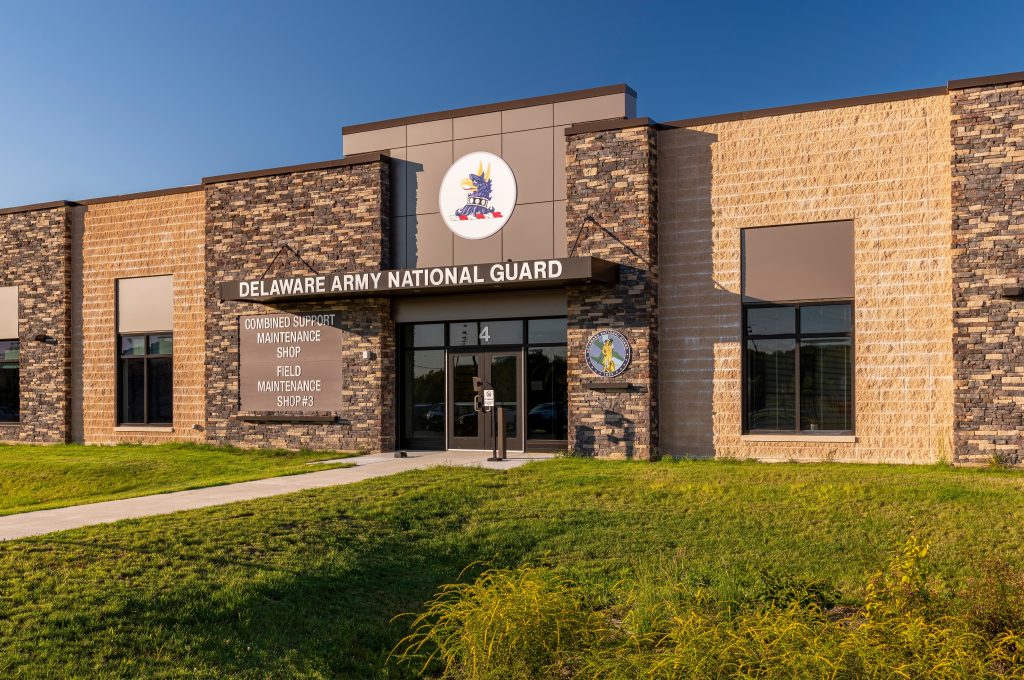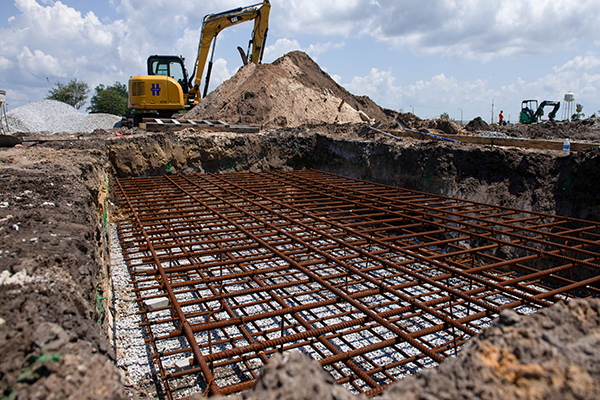Alternative delivery methods offering early involvement of the construction contractor during design offer a valuable tool to help address cost and schedule overruns in federal projects, increase collaboration, and grow the number of companies willing to bid.
By Ben Nichols, LEED AP, M.SAME, and Liz Krick, M.SAME
Over the last few years, the federal government has committed substantial investment in infrastructure. To execute these programs and achieve national security and economic objectives, projects must be executed more quickly and efficiently. However, historically, up to 90 percent of government construction projects have not been completed on time or on budget. The question is why. The answers are complex.
Industry is faced with many challenges in executing federal work, including a current shortage of labor and fewer contractors available. General contractors and trade partners also may be hesitant to bid on federal work due to a complex procurement process, strict bidding requirements, higher levels of regulations, and lower profit margins that drive them to bid work in other sectors. To address this prevailing issue, and be better prepared to execute the projects needed for our warfighters and agency partners, we must find ways to capture a finite labor resource for projects. A potential solution to alleviate concerns and encourage general contractors and trade partners to bid on government projects is the wider offering of alternative construction delivery methods (ACDMs). Methods such as progressive design-build and construction management at-risk (CM at-risk) allow for early contractor involvement. While these alternative methods do not come without their own challenges, choosing the right project to utilize ACDMs can improve partnership with the federal government and speed projects to completion.

Finding The Right Approach
Early contractor involvement provides the opportunity for the contractor to potentially deliver ahead of schedule if the mission requires it through the use of early procurement of long lead materials and the potential of beginning early construction activities prior to the completion of 100 percent construction documents. The methodology also allows for the contractor to perform constructability reviews and scheduling tasks during preconstruction, working together to identify risk and solve issues collaboratively. By utilizing alternative delivery methods, collaboration increases – and the project team is able to better plan for project execution. This results in better partnering, better delivery, and better budget control.
The established standard delivery method for the federal government historically has been design-bid-build, where the owner contracts with a design team to create plans and specifications, then the contractor bids on the project (often selected based on the lowest bid). The potential to leverage other delivery methods exists, with varying advantages and disadvantages to each. Selecting the most appropriate approach will depend on the specific needs and circumstances of the work. More often than not, finding the right delivery method for the right project will improve partnership and execution, in terms of budget, schedule, quality control, and safety.

Design-Build. In design-build, the owner contracts with a single entity to provide both design and construction. The design-builder is responsible for completing the project according to the owner’s specifications and is accountable for cost, schedule, and performance. This is accomplished by involving the contractor, which increases collaboration and allows for early procurement of long lead items and early start to construction activities. A drawback could be that the owner has less flexibility during design as the design team is subcontracted to the contractor.
CM-at-Risk. In this method, the owner hires a construction manager during the design phase to provide cost estimating, scheduling, and constructability input. The construction manager provides a guaranteed maximum price for the project and assumes fiscal responsibility for delivery within that price. This method (also called early contractor involvement or integrated design and construction) has seen some more adoption recently at the federal level.
Progressive Design-Build. This method combines some elements of design-build and traditional design-bid-build. In a progressive design-build contract, the owner selects a contractor to work with them during the design process, and the contractor becomes a part of the project team. Eventually the contract would shift to a design-build firm fixed price towards completion of the design timeframe. As design progresses, the contractor provides input on construction feasibility, cost, and schedule. This process is iterative, and involves ongoing collaboration between the owner, contractor, and designer. Overall, progressive design-build is intended to promote collaboration, reduce risk, and improve outcomes. By involving contractors in the design, owners can benefit from their expertise while the contractor can gain a better understanding of project goals and constraints.
Implementation Challenges
While there are many benefits to project delivery methods beyond the traditional design-bid-build, implementing these alternatives in the federal government poses several challenges.
- Limited experience: ACDMs are still relatively new to some within the construction industry and the federal government. There can be a lack of understanding of the benefits and risks associated with ACDMs. Training will be needed for industry and the government to utilize these approaches to their full extent.
- Programming timelines: The federal government has specific procurement policies that must be followed when contracting and planning for construction services. Planning to use an ACDM would require a discussion during programing where end users are provided with information on the benefits of the specific alternative method to the project.
- Cultural hesitancy: Due to the comfort level of the design-bid-build method at executing projects, some stakeholders in the government may be hesitant to change. Industry and government choosing to team together to make the shift would make the transition less risky.
- Risk allocation: ACDMs require a different approach to risk allocation compared to traditional delivery methods. The government must ensure that risks are appropriately allocated among project participants to minimize the potential for disputes and delays.

Improving Collaboration
Using ACDMs can help the government meet its programming needs. For example, CM-at-risk can be particularly useful when dealing with tight schedules or limited budgets. Associated General Contractors of America issued a publication in June 2020, “Construction Management at Risk Benefits, Criteria and Justification Criteria,” that outlines factors that must be considered when deciding whether CM-at-risk is the right method to use. Advantages include allowing for the selection of the most qualified team for the project at hand; a better set of construction documents due to the additional review afforded by the early involvement of the construction manager (which translates into a lower rate of change orders and better budget control); the increased likelihood of team members being able to resolve issues during the course of the project; and decreased likelihood of legal action at the end of the project.
Similarly, progressive design-build can foster better collaboration and communication between the stakeholders involved in a project, leading to better outcomes and reduced costs. Moreover, progressive design-build can bridge the gap between design-bid-build and design-build, offering the government the opportunity to integrate the general contractor for construction feasibility, cost, and schedule but also retaining more control over the design phase.
Improving Product Execution
With a growing shortage of skilled construction workers, the use of alternative delivery methods could encourage more contractors and trade partners to choose the federal government as their client of choice rather than go elsewhere to seek out more collaborative clients. It can also provide opportunities for increased collaboration and communication between contractors, architects, and engineers. By bringing together all parties at the beginning, each team member can identify challenges and come up with innovative solutions. This can help streamline the construction process, reduce delays, and improve the quality of the final product.
These alternative delivery methods can foster closer partnerships between the public and private sectors, enabling more efficient resource allocation and risk-sharing, helping lead to better execution in construction, as well as encourage greater innovation and cost savings. By using ACDMs, federal owners can better navigate a shrinking labor base, leverage industry expertise, and build relationships that lead to more efficient and effective project execution.
However, utilizing any new delivery method requires a significant shift from the traditional approach to construction delivery. Change is not easy—but it can be necessary to upend the status quo. Careful planning, education, and stakeholder engagement are crucial for successful implementation.
Ben Nichols, LEED AP, M.SAME, is President, and Liz Krick, M.SAME, is Business Development Manager, Harkins Builders Inc. They can be reached at bnichols@harkinsbuilders.com; and ekrick@harkinsbuilders.com.
Construction Interests
Through the establishment of the Construction Community of Interest, SAME is leading the charge to provide industry and government with subject matter expertise that can shape the implementation and adoption of ACDMs. At the 2023 Capital Week this past March, SAME held the inaugural IGE Summit, which included an in-depth discussion with industry and government experts on improvements to current project delivery methods. The event identified two broad lines of effort: developing and communicating a shared purpose and urgency; and maximizing industry support, synchronized as the government regulations, policy, and laws evolve.
A panel in May at SAME’s 2023 Joint Engineer Training Conference in San Antonio continued the conversation, building on the discussion with a series of attainable conclusions.
- Alternative project delivery methods should be utilized more frequently to complete more projects on time, on budget, and with fewer disputes.
- CM-at-risk with a Guaranteed Maximum Price appears to have the best upside, least downside, and is the most versatile.
- No project delivery method works perfectly for every project, but big opportunities exist to leverage alternative delivery methods much more than we currently do.
- SAME is well positioned to make alternative project delivery methods more visible and to train both private and public sector participants on how to successfully implement alternative project delivery methods.
The recently created Construction COI named the improvement of construction delivery of federal projects to keep them on budget, on schedule, and of the highest quality as a top priority mission. Members are working on a variety of initiatives to accomplish this, including the development of an action plan on what efforts are underway; the creation of a forum to provide progress to industry; and making the contract and delivery methods more collaborative. This last item includes more equitable risk-sharing and increasing the federal contractor construction base by removing barriers to market entry.
More News from TME
-

Providing Benefits Through Adaptive Reuse of Federal Assets
Reconfiguring existing sites or buildings for a new mission has many inherent advantages to solve challenges that face federal entities, but key considerations need to be accounted for in order to maximize value. -

Developing an Engineering Standard of Care for Cyber Safety
There is growing urgency to secure the nation’s critical infrastructure from a cyberattack, which will require improvements in both federal policies and day-to-day operations to strengthen response and recovery from incidents. -

Improving Escalation Forecasting in Federal Construction
A newly developed escalation forecasting methodology for major capital acquisition projects improves on previous models with a Monte Carlo simulation to increase accuracy.